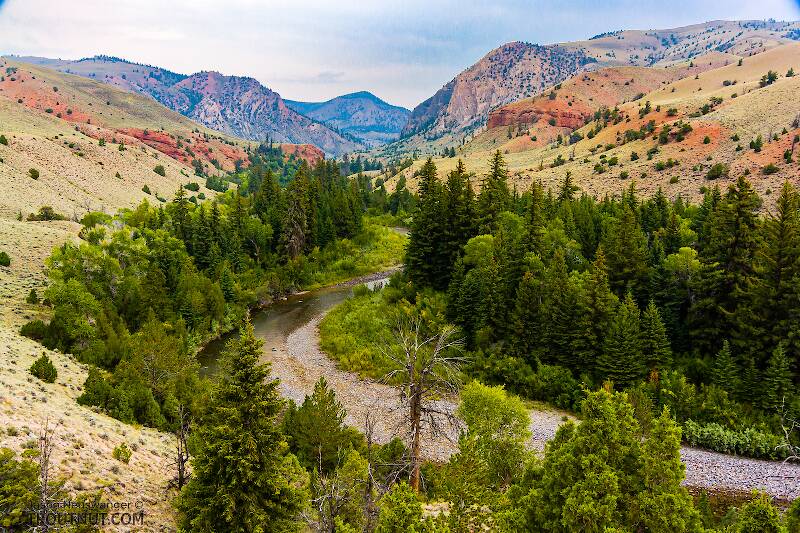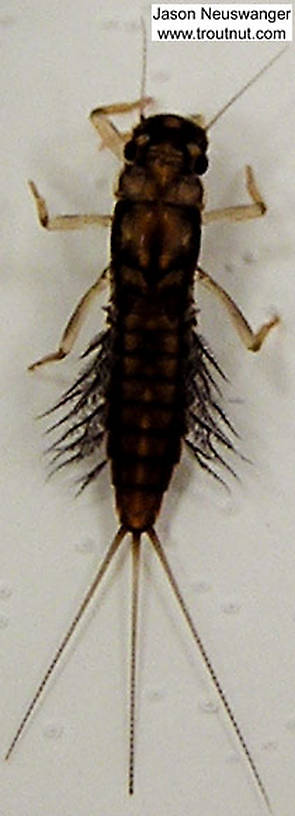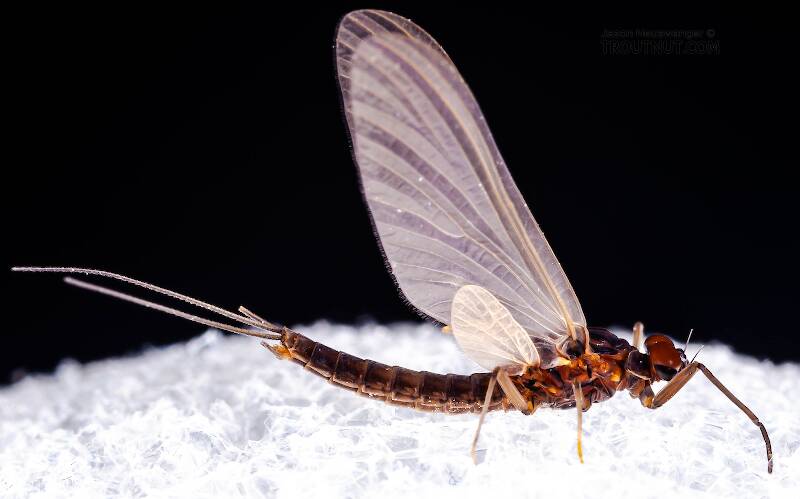
Salmonflies
Pteronarcys californica
The giant Salmonflies of the Western mountains are legendary for their proclivity to elicit consistent dry-fly action and ferocious strikes.
Featured on the forum

Troutnut is a project started in 2003 by salmonid ecologist Jason "Troutnut" Neuswanger to help anglers and
fly tyers unabashedly embrace the entomological side of the sport. Learn more about Troutnut or
support the project for an enhanced experience here.
Dark Blue Quills
Like most common names,"Dark Blue Quill" can refer to more than one taxon. They're previewed below, along with 6 specimens. For more detail click through to the scientific names.
Mayfly Genus Paraleptophlebia
These are very rarely called Dark Blue Quills.
There are many species in this genus of mayflies, and some of them produce excellent hatches. Commonly known as Blue Quills or Mahogany Duns, they include some of the first mayflies to hatch in the Spring and some of the last to finish in the Fall.
In the East and Midwest, their small size (16 to 20, but mostly 18's) makes them difficult to match with old techniques. In the 1950s Ernest Schwiebert wrote in Matching the Hatch:
Fortunately, modern anglers with experience fishing hatches of tiny Baetis and Tricorythodes mayflies (and access to space-age tippet materials) are better prepared for eastern Paraleptophlebia. It's hard to make sense of so many species, but only one is very important and others can be considered in groups because they often hatch together:
In the East and Midwest, their small size (16 to 20, but mostly 18's) makes them difficult to match with old techniques. In the 1950s Ernest Schwiebert wrote in Matching the Hatch:
"The Paraleptophlebia hatches are the seasonal Waterloo of most anglers, for without fine tippets and tiny flies an empty basket is assured."
Fortunately, modern anglers with experience fishing hatches of tiny Baetis and Tricorythodes mayflies (and access to space-age tippet materials) are better prepared for eastern Paraleptophlebia. It's hard to make sense of so many species, but only one is very important and others can be considered in groups because they often hatch together:
- Paraleptophlebia adoptiva is by far the most important species of this genus in the two regions and is an early Spring emerger.
- Paraleptophlebia mollis, Paraleptophlebia guttata, and Paraleptophlebia strigula complement each other in late spring and early summer.
- Paraleptophlebia debilis and Paraleptophlebia praepedita occur together in the fall.
- The most important species is Paraleptophlebia debilis. This large (for the genus) Fall emerger can be found throughout the region. It is often accompanied by one of the slightly larger tusked species. Depending on locale, this can be Paraleptophlebia bicornuta (the most common), Paraleptophlebia packii or Paraleptophlebia helena. Check out their hatch pages for distribution information.
- Spring is the season for the smaller Paraleptophlebia heteronea throughout most of the region with Paraleptophlebia gregalis filling this niche in California and parts of Oregon.
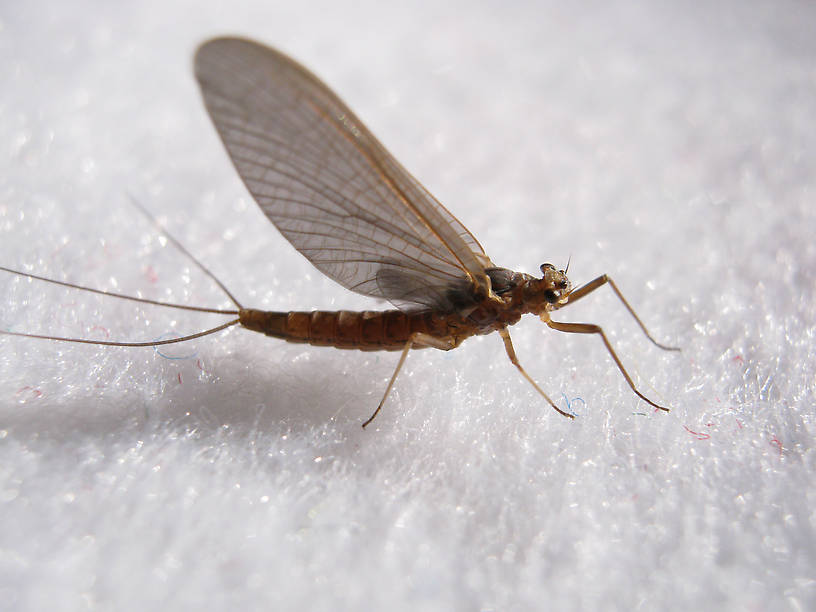
Size: 9mm. These photos really highlight the brown pigmentation of the wing venation, but in the hand the wings look to be a uniform smokey gray. - Entoman

This specimen (and a few others I collected but didn't photograph) appear to represent the first finding of Paraleptophlebia sculleni outside the Oregon Cascades, although it is not a monumental leap from there to the Washington Cascades. The key characteristics are fairly clear.
See 18 more specimens...
Mayfly Species Neoleptophlebia adoptiva
These are very rarely called Dark Blue Quills.
This is the best Spring hatch after the Quill Gordons (Epeorus pleuralis) but before the Hendricksons (Ephemerella subvaria) in most parts of the East, although it can overlap with both. The Blue Quills are small mayflies (hook size 16-20) but they can hatch in incredible numbers at a time when eager trout are just beginning to look to the surface after a hungry winter.
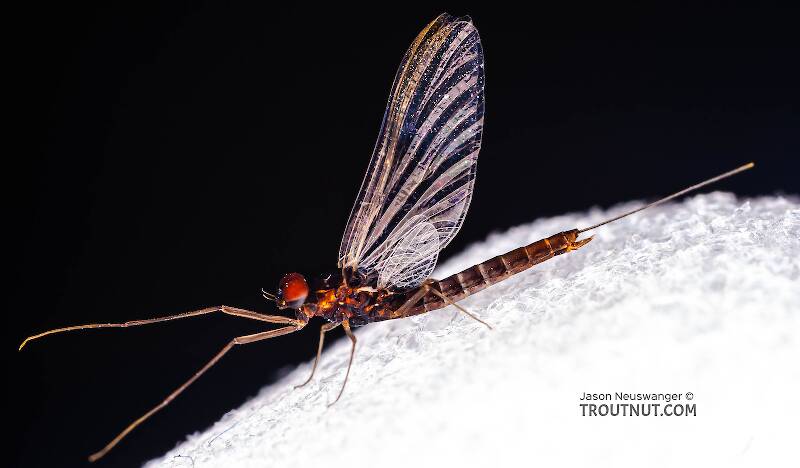
Based on the pale longitudinal forewing veins (excepting the costals), dark middle terga, and genitalia (Burks '53), this specimen is P. adoptiva.
Mayfly Species Teloganopsis deficiens
These are very rarely called Dark Blue Quills.
Anglers in western Wisconsin, where these little flies hatch in good numbers on summer rivers, have termed them "Darth Vaders" because of the very dark color of their wings.
Until recently, this species was known as Serratella deficiens.
Until recently, this species was known as Serratella deficiens.
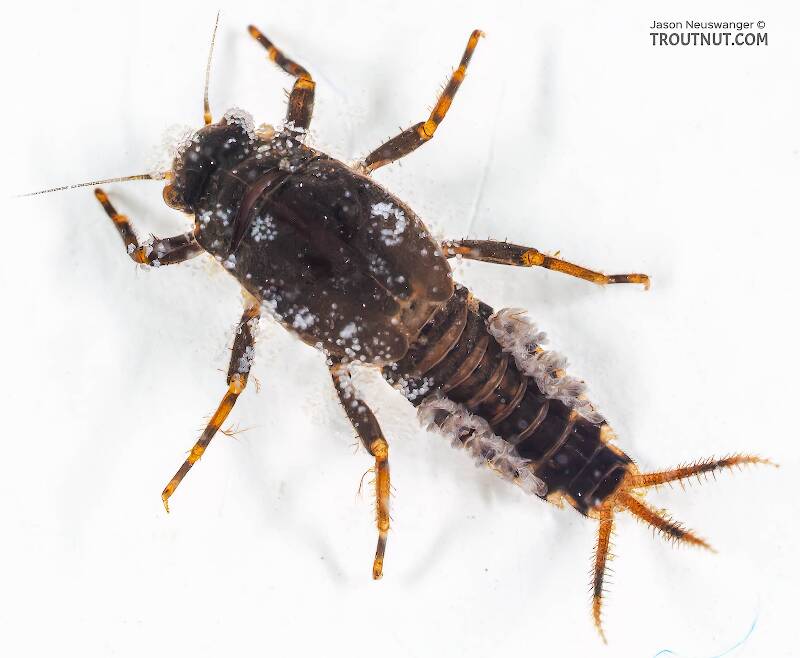
This nymph has tiny, barely detectable tubercles on its abdominal segments, and I could not find the maxillary palpi. I tentatively guessed that it is Serratella deficiens back when that was a thing; the species is now known as Teloganopsis deficiens. One of the key characteristics, tarsal claws with a subapical denticle being larger than the preceding denticles, seems to be visible in some of the pictures.
References
- Schwiebert, Ernest G. 1955. Matching the Hatch. MacMillan Publishing Company.

